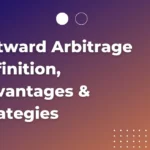Marketing Campaigns in Finance: Strategies, Examples, and Tips to Excel
A Marketing Campaigns is a strategic effort to promote financial products or services, build customer trust, and drive growth. These campaigns often use digital channels, such as SEO and social media, along with traditional methods like TV and print ads to engage specific customer segments.
Marketing campaigns are the backbone of every successful business. In the world of finance, where trust, transparency, and relevance are critical, running effective marketing campaigns can be the difference between gaining loyal customers and losing them to competitors. Whether you’re promoting financial products, building brand awareness, or encouraging customer retention, crafting a solid marketing strategy is essential.
In this article, we’ll learn about marketing campaigns in the finance sector. We will cover strategies, examples, and key takeaways.
Key Takeaways on Marketing Campaigns in Finance
- Trust and Transparency Are Paramount In finance, trust is everything. Marketing campaigns must focus on clear, honest communication while ensuring compliance with all regulations. Transparency builds customer confidence and loyalty.
- Understand and Segment Your Audience Different financial needs require tailored approaches. Use audience segmentation to deliver personalized messaging, whether targeting millennials for digital banking or high-net-worth individuals for wealth management.
- Leverage Multi-Channel Strategies Combining digital channels like SEO, social media, and email with traditional advertising methods ensures a broader reach and higher engagement.
- Focus on Education and Value Financial literacy campaigns not only empower customers but also position your brand as a trusted authority. Providing value through educational content fosters long-term relationships.
- Measure Campaign Performance with Key Metrics Metrics like ROI, customer acquisition cost (CAC), and conversion rates are essential to evaluate the success of your campaigns. Use these insights to optimize future efforts and maximize impact.
What Are Marketing Campaigns ?
In the finance world, a marketing campaign is a coordinated effort to promote financial products or services, attract potential customers, and retain existing ones. These campaigns often focus on creating trust and delivering value while adhering to strict regulatory guidelines.
Example
A bank promoting a new savings account might run an online ad campaign targeting millennials who are just starting their financial journey. The messaging would likely focus on the benefits of saving, such as earning higher interest rates, while ensuring compliance with financial advertising laws.
Why Are Marketing Campaigns Important ?
- Build Brand Trust: Finance is all about trust. Customers want to feel confident about where they’re putting their money.
- Attract New Customers: Targeted campaigns help attract specific audience segments like first-time homebuyers or investors.
- Educate Customers: Financial literacy campaigns empower customers to make informed decisions about savings, investments, or loans.
- Retain Loyal Clients: Retention programs, like cashback offers on credit cards, keep customers engaged and loyal.
Key Elements of a Successful Marketing Campaign
To run an impactful campaign, you need to focus on the following elements:
1. Clear Objectives
Before launching any campaign, define what you want to achieve. Is it increasing sign-ups for a credit card? Driving traffic to your mobile banking app? Clear objectives ensure your campaign is focused.
Example:
- Objective: Increase sign-ups for a new credit card.
- Campaign Idea: Promote the card’s benefits (like 5% cashback) through targeted social media ads.
2. Understanding Your Audience
Audience segmentation is critical. Financial customers have different needs based on their demographics, lifestyle, and financial goals.
Key Segments:
- Millennials looking for digital banking solutions.
- High-net-worth individuals are interested in wealth management.
- Small businesses seeking loans or credit.
Example: A fintech app might target young professionals by showcasing how its budgeting tool simplifies money management.
3. Strong Messaging
Financial products can be complex, but your messaging doesn’t have to be. Keep it simple, transparent, and relatable.
Tip
Use emotional appeals when appropriate. For example, highlight how a savings account can help parents secure their child’s future.
4. Multi-Channel Approach
Don’t rely on just one platform. Combine digital marketing (social media, email) with traditional methods (TV, print) to reach a broader audience.
Example: A bank promoting a loan might use Google Ads to appear in search results for “best personal loans” while also running local radio ads.
Effective Marketing Campaign Strategies in Finance Sector
1. Digital Marketing for Finance
Digital marketing is a game-changer for financial campaigns. It allows companies to target specific audiences and measure performance in real-time.
Key Tactics:
- Search Engine Optimization (SEO): Rank high on Google for terms like “best investment plans” or “low-interest loans.”
- Pay-Per-Click (PPC) Ads: Use Google Ads to target high-intent keywords.
- Social Media Ads: Platforms like Instagram and LinkedIn work well for targeting different age groups.
Example: A bank might run an Instagram campaign featuring user-friendly videos explaining its mobile app’s features.
2. Educational Campaigns
Building trust through education is a long-term strategy that always pays off. Create resources like blogs, webinars, or video tutorials that simplify complex financial topics.
Example: A wealth management firm could launch a series of videos explaining investment basics, targeting first-time investors.
3. Customer Loyalty Programs
Reward existing customers to keep them engaged. Loyalty programs work well for products like credit cards and digital wallets.
Example: Offer extra rewards points for customers who refer friends to your financial product.
4. Seasonal Campaigns
Tie your campaigns to seasons or events, like tax season or holiday shopping, to stay relevant.
Example: During tax season, promote products like tax-saving investment plans with offers like zero processing fees.
5. Personalization
People love personalized services, especially in finance. Use data analytics to tailor recommendations based on customer behavior.
Example: A bank might send personalized emails suggesting investment options based on a customer’s spending habits.
Channels for Marketing Campaigns in Finance
To make your campaigns successful, use a mix of these channels:
1. Social Media
Platforms like Instagram, Facebook, and LinkedIn are excellent for reaching specific audiences.
Example: Promote a budgeting tool on Instagram with engaging reels.
2. Email Marketing
Send targeted emails with offers, updates, or educational resources.
Example: A bank might email customers about a limited-time offer on mortgage rates.
3. Content Marketing
Blogs, eBooks, and guides can position you as a thought leader.
Example: Write a blog titled “5 Ways to Save for Retirement” to attract readers interested in long-term financial planning.
4. Traditional Advertising
Don’t ignore TV, radio, or print ads. They work well for promoting brand trust.
Example: A TV ad showing a family achieving their dream of owning a home with a bank loan.
Metrics to Measure Campaign Success
To know if your campaign is working, track these key metrics:
- Customer Acquisition Cost (CAC): How much you’re spending to get a new customer.
- Return on Investment (ROI): The profitability of the campaign.
- Engagement: Clicks, likes, shares, and comments.
- Conversion Rate: How many people took the desired action (e.g., signing up for a loan).
- Retention Rate: How many customers stay loyal to your brand.
Example: If a credit card campaign cost $10,000 and brought in 500 customers, the CAC is $20 per customer.
Examples of Successful Financial Marketing Campaigns
Here are some campaigns that nailed it:
1. American Express: Small Business Saturday
AmEx encouraged customers to shop small and local, boosting community engagement and building goodwill.
2. Mastercard: Priceless
Mastercard highlighted life’s priceless moments, focusing on emotional connections rather than the card itself.
3. Acorns: Millennial Marketing
Acorns used relatable Instagram ads to promote its micro-investing app, making investing approachable for younger audiences.
Future Trends in Financial Marketing
To stay ahead, focus on these trends:
1. AI and Machine Learning
AI can personalize recommendations and automate customer service.
2. Gamification
Use gamified tools to make saving and investing fun, especially for younger customers.
3. Sustainability Marketing
Highlight your ESG (Environmental, Social, Governance) initiatives to attract socially conscious customers.
Frequently Asked Questions (FAQs) About Marketing Campaigns in Finance
1. What is a marketing campaign in finance?
A marketing campaign in finance is a planned effort to promote financial products or services, attract new customers, retain existing ones, and build brand trust. Examples include campaigns for credit cards, investment plans, or financial literacy programs.
2. Why is marketing important in the financial sector?
Marketing helps financial institutions build trust, educate customers about their products, drive customer acquisition, and improve retention rates. It’s essential for staying competitive in a crowded market.
3. What are the most effective marketing strategies for finance?
The most effective strategies include:
. Digital marketing (SEO, PPC, social media)
. Educational content campaigns
. Customer loyalty programs
. Seasonal promotions
. Personalized messaging based on data analytics
4. How can financial companies build trust through marketing?
Financial companies can build trust by:
Using transparent and simple messaging
Educating customers with honest and informative content
Complying with all regulatory guidelines
Highlighting customer success stories and testimonials
5. What are some common challenges in financial marketing campaigns?
Challenges include:
Gaining customer trust in a highly regulated industry
Simplifying complex financial products for broad audiences
Complying with strict advertising laws
Addressing data privacy and cybersecurity concerns
6. How can I measure the success of a financial marketing campaign?
Success can be measured using:
Return on Investment (ROI)
Customer Acquisition Cost (CAC)
Conversion rates
Engagement metrics (likes, shares, clicks)
Customer retention rates
7. What role does digital marketing play in finance?
Digital marketing is crucial in finance as it allows for:
Targeting specific audiences
Real-time performance tracking
Cost-effective advertising
Building online visibility through SEO and social media
8. What is the importance of compliance in financial marketing?
Compliance ensures that marketing campaigns meet legal standards and avoid misleading claims. It protects both the organization and its customers, fostering trust and credibility.
9. How can financial institutions use personalization in marketing?
Personalization involves tailoring content, product recommendations, and offers based on a customer’s behavior, preferences, or financial goals. This makes campaigns more relevant and engaging.
10. What are some examples of successful financial marketing campaigns?
American Express’s Small Business Saturday: Encouraged shopping at local businesses.
Mastercard’s Priceless Campaign: Focused on emotional storytelling.
Acorns’ Instagram Ads: Targeted millennials with relatable micro-investing content.








